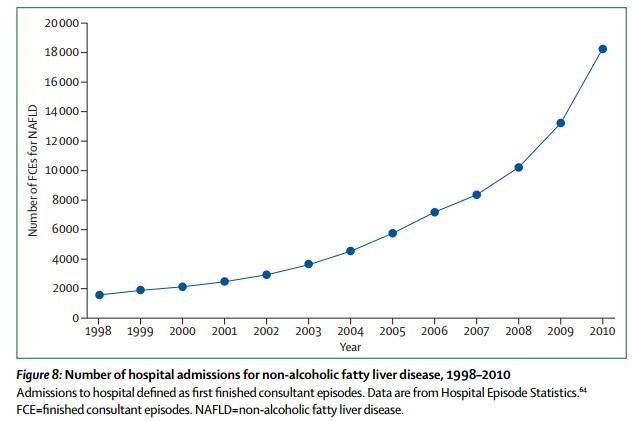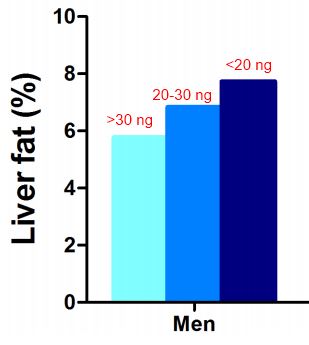More fat in liver associated with lower vitamin D
Vitamin D Levels Are Inversely Associated with Liver Fat Content and Risk of Non-Alcoholic Fatty Liver Disease in a Chinese Middle-Aged and Elderly Population: The Shanghai Changfeng Study.
PLoS One. 2016 Jun 10;11(6):e0157515. doi: 10.1371/journal.pone.0157515. eCollection 2016.
 Search for Fatty Liver in VitaminDWiki 316 items July 2017
1. Overview Liver and vitamin D contains the following summary
{include}
1. NAFLD - from the web
Note: most are also associated with low vitamin D
Search for Fatty Liver in VitaminDWiki 316 items July 2017
1. Overview Liver and vitamin D contains the following summary
{include}
1. NAFLD - from the web
Note: most are also associated with low vitamin D

📄 Download the PDF from VitaminDWiki

Wang D1, Lin H1, Xia M1, Aleteng Q1, Li X1, Ma H1, Pan B2, Gao J3, Gao X1.
1 Department of Endocrinology and Metabolism, Shanghai Zhongshan Hospital, Institute of Chronic Metabolic Diseases, Fudan University, Shanghai 200032, China.
2 Department of Laboratory Medicine, Zhongshan Hospital, Fudan University, Shanghai, 200032 China.
3 Department of Clinical Nutrition, Zhongshan Hospital, Fudan University, Shanghai, 200032 China.
BACKGROUND/OBJECTIVES:
Vitamin D exerts metabolic activities. We investigated whether the 25-hydroxy vitamin D [25(OH)D] is associated with liver fat content (LFC) and non-alcoholic fatty liver disease (NAFLD) in a middle-aged, elderly Chinese population.
SUBJECT/METHODS:
A total of 2,960 participants (954 men and 2,006 women) aged over 45 years old were enrolled. Each participant underwent a standard interview, anthropometric measurements and laboratory examinations. Vitamin D deficiency and insufficiency was diagnosed when serum 25(OH) D level was < 50 and 50-75nmol/L. An ultrasound quantitative method was used to assess the LFC.
RESULTS:
Among the 2,960 participants, 1,982 (67.0%) subjects had vitamin D deficiency, 769 (26.0%) had vitamin D insufficiency, and 209 (7%) had normal vitamin D. Male subjects with vitamin D deficiency and insufficiency had significantly higher LFC than those with normal 25(OH)D (P = 0.034), while the LFC values showed no significant difference among the female subjects with vitamin D sufficiency, insufficiency and deficiency (P = 0.396). Univariate correlation analysis showed that 25(OH)D had a significantly negative association with LFC in men (r = -0.085, P = 0.009), but not in women. After adjusting for age, cigarette smoking, examination season, serum calcium, PTH and all possible confounders that displayed significant associations with LFC in univariate correlation analysis, serum 25(OH)D remained associated with LFC in middle-aged and elderly Chinese men.
CONCLUSION:
Serum 25(OH)D level was inversely associated with LFC in middle-aged and elderly Chinese men.
PMID: 27284686 PMCID: PMC4902193 DOI: 10.1371/journal.pone.0157515
